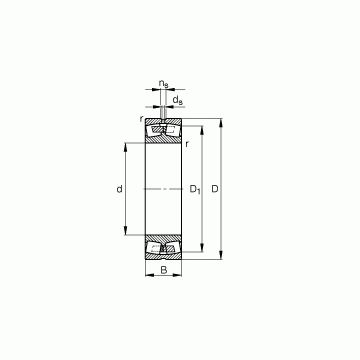Home> Company News> Kawasaki hydraulic pump adjustment upgrade
- AddressNo.7001. XUEYUAN ROAD, NANSHAN DISTRICT,SHENZHEN,CHINA
- Factory AddressNo.7001. XUEYUAN ROAD, NANSHAN DISTRICT,SHENZHEN,CHINA
- Worktime9:00-18:00
- Phone(Working Time)0531-85064681
- Phone(Nonworking Time)0531-85064680
- Fax0531-85064680
Hydraulic systems are critical components of heavy machinery, and their performance and efficiency are directly impacted by the hydraulic pump adjustment. Upgrading the hydraulic pump adjustment can lead to improved performance and efficiency, making it an essential consideration for those looking to optimize their hydraulic system. In this outline, we will discuss the importance of upgrading Kawasaki hydraulic pump adjustment, the basics of hydraulic pump adjustment, and the benefits of upgrading the adjustment. We will also provide guidance on how to safely prepare for and perform the upgrade, as well as best practices for ongoing maintenance and inspection to ensure the hydraulic system continues to function properly.
Understanding Kawasaki Hydraulic Pump Adjustment
Kawasaki hydraulic pumps are essential components of hydraulic systems in various industrial applications. The hydraulic pump is responsible for regulating the flow of hydraulic fluid to various parts of the hydraulic system, and it is crucial to ensure that the pump is adjusted correctly to achieve optimal performance and efficiency.
The adjustment of a Kawasaki hydraulic pump involves altering the internal mechanism of the pump to control the fluid pressure and flow. The adjustment can be done by changing the size of the pump's inlet and outlet ports, which affects the amount of fluid that passes through the pump. The adjustment can also be done by changing the angle of the swash plate, which determines the pressure and flow rate of the hydraulic fluid.
It is essential to understand how hydraulic pump adjustment works because it can significantly impact the performance of the entire hydraulic system. For example, incorrect adjustment can result in increased energy consumption, reduced efficiency, and premature wear of hydraulic system components. On the other hand, proper adjustment can result in improved performance, increased longevity of hydraulic components, and reduced maintenance costs.
To determine the current adjustment of a Kawasaki hydraulic pump, a hydraulic pressure gauge can be used to measure the pump's pressure output. The pressure reading should then be compared to the recommended adjustment range for the specific hydraulic pump model. If the pump's pressure output is outside the recommended range, adjustments can be made to bring it within the acceptable range.
Overall, understanding Kawasaki hydraulic pump adjustment is crucial to achieving optimal performance and efficiency in hydraulic systems. Proper adjustment can lead to improved performance, reduced energy consumption, and increased longevity of hydraulic components. It is essential to consult the manufacturer's instructions and recommendations when adjusting Kawasaki hydraulic pumps to ensure that the adjustment is done correctly and safely.
Benefits of Upgrading Kawasaki Hydraulic Pump Adjustment
Upgrading the adjustment of your Kawasaki hydraulic pump can bring several benefits to your hydraulic system. These benefits include improved performance, efficiency, and longevity.
One of the primary benefits of upgrading the hydraulic pump adjustment is improved performance. When the hydraulic pump is properly adjusted, it can operate more efficiently, resulting in better overall system performance. This means that your equipment can operate faster, smoother, and with greater precision, helping to increase productivity and reduce downtime.
Another benefit of upgrading the adjustment is improved efficiency. By ensuring that the hydraulic pump is operating at the correct adjustment range, it can work more efficiently and use less energy. This means that your hydraulic system can save on energy costs and be more environmentally friendly.
In addition to improved performance and efficiency, upgrading the hydraulic pump adjustment can also improve the longevity of your equipment. When the hydraulic pump is properly adjusted, it can help reduce wear and tear on the components of your hydraulic system. This means that your equipment can last longer and require fewer repairs or replacements over time, saving you money in the long run.
Furthermore, upgrading the hydraulic pump adjustment can also improve the safety of your equipment. When the hydraulic pump is not operating within the correct adjustment range, it can cause the system to become unstable and potentially dangerous. By upgrading the adjustment, you can ensure that your hydraulic system is operating safely and reliably.
Overall, upgrading the hydraulic pump adjustment of your Kawasaki hydraulic system can bring numerous benefits, including improved performance, efficiency, longevity, and safety.
Preparing for Kawasaki Hydraulic Pump Adjustment Upgrade
Upgrading the adjustment of a Kawasaki hydraulic pump can be a complex process, and it is essential to have the right tools and equipment before beginning the process. To prepare for the upgrade, you will need a hydraulic pressure gauge and a hydraulic adjustment kit.
Before beginning the adjustment upgrade, it is crucial to shut down the engine and release any residual pressure in the hydraulic system. This step is essential for safety and prevents any sudden releases of pressure that could cause injury.
Next, locate the adjustment valve on the Kawasaki hydraulic pump. This valve may be located on the pump itself or on a separate control panel, depending on the specific model. Once you have located the adjustment valve, you will need to remove the protective cover to access it.
Once you have removed the cover, it is essential to clean the area around the adjustment valve thoroughly. Any dirt or debris in this area can cause inaccuracies in the adjustment process, leading to suboptimal performance or damage to the pump.
With the area cleaned, you can begin the process of upgrading the Kawasaki hydraulic pump adjustment. Follow the instructions provided in the adjustment kit carefully, making sure to use the correct tools and techniques to ensure accuracy.
It is important to make small adjustments and test the pressure after each adjustment to ensure optimal performance. This process can take some time, but it is essential to make small adjustments gradually to prevent any sudden changes in pressure that could damage the hydraulic system.
Overall, preparing for the upgrade requires attention to detail and a commitment to safety. Taking the time to properly prepare for the process will help ensure a successful adjustment upgrade and optimal performance of the Kawasaki hydraulic system.
Upgrading Kawasaki Hydraulic Pump Adjustment
Upgrading the adjustment of a Kawasaki hydraulic pump can provide several benefits, including improved performance, efficiency, and longevity. The adjustment of a hydraulic pump is critical to ensuring optimal system function and preventing damage to the pump or other components.
To upgrade the adjustment of a Kawasaki hydraulic pump, the following steps should be taken:
-
Determine the correct adjustment range: The adjustment range for Kawasaki hydraulic pumps can vary depending on the specific model and application. It is essential to determine the recommended adjustment range before making any upgrades.
-
Gather the necessary tools and equipment: Upgrading the adjustment of a Kawasaki hydraulic pump typically requires a hydraulic pressure gauge and a hydraulic adjustment kit. These tools will allow you to accurately measure and adjust the pressure within the system.
-
Prepare the system for adjustment: Before upgrading the adjustment, it is crucial to shut down the engine and release any residual pressure within the system. This will ensure that the adjustment is made safely and accurately.
-
Access the adjustment valve: The adjustment valve is typically located on the side or top of the hydraulic pump. Use the appropriate tools to remove the valve and access the adjustment mechanism.
-
Use the adjustment kit to make small adjustments: The adjustment kit will typically include a variety of shims, washers, or spacers that can be used to fine-tune the adjustment of the hydraulic pump. Make small adjustments and test the pressure after each adjustment to ensure optimal performance.
-
Test the system and make final adjustments: Once the adjustment has been made, it is important to test the hydraulic system for leaks and monitor performance. If necessary, make final adjustments to achieve the desired adjustment range.
Upgrading the adjustment of a Kawasaki hydraulic pump can provide significant benefits for the overall function and longevity of the hydraulic system. By following the above steps and maintaining the system regularly, you can ensure optimal performance and efficiency for years to come.
Testing and Final Adjustments
After upgrading the Kawasaki hydraulic pump adjustment, it is important to test the hydraulic system to ensure it is functioning properly. Testing involves checking for leaks and monitoring performance to make sure that the hydraulic pump adjustment upgrade has been successful.
To begin the testing process, the hydraulic system should be started and allowed to run for a few minutes to ensure that it has stabilized. Then, the hydraulic pressure gauge should be used to check the pressure of the hydraulic system.
If the pressure is not within the desired range, adjustments should be made using the adjustment kit. Small adjustments should be made at a time, with the pressure being checked after each adjustment to ensure that it is within the desired range.
Once the pressure is within the desired range, the hydraulic system should be tested for leaks. This can be done by checking for any visible signs of leaking fluid or by using a leak detector.
If any leaks are found, the hydraulic system should be shut down and the source of the leak should be identified and repaired before proceeding with further testing.
After ensuring that there are no leaks, the hydraulic system should be monitored for performance. This involves observing the system as it is used and checking to ensure that it is operating smoothly and efficiently.
If any issues are identified during testing, further adjustments may need to be made to the hydraulic pump adjustment. It is important to continue testing and adjusting until the hydraulic system is operating optimally.
Maintenance and Best Practices
After upgrading the Kawasaki hydraulic pump adjustment, it is important to maintain the hydraulic system to ensure it continues to function properly. Regular inspections and maintenance are key to preventing issues from developing and ensuring optimal performance and efficiency.
Some best practices for maintaining the hydraulic system include regularly inspecting the system for leaks and damage, replacing worn or damaged components, and cleaning the hydraulic system to prevent contamination.
In addition, it is important to follow the manufacturer's recommended maintenance schedule for the hydraulic system, which may include regular fluid changes and inspections.
Regularly inspecting the hydraulic pump adjustment is also important to ensure that it continues to function properly. Any signs of wear or damage should be addressed immediately to prevent further issues from developing.
Conclusion
Upgrading the hydraulic pump adjustment of a Kawasaki hydraulic system can have significant benefits for performance and efficiency. By optimizing the adjustment range, the system can operate more smoothly and with less strain on its components, resulting in reduced wear and tear, lower energy consumption, and improved output.
Investing in hydraulic system upgrades and maintenance is crucial for the long-term success of a Kawasaki hydraulic system. Upgrading the hydraulic pump adjustment can be an important part of this maintenance plan, helping to ensure that the system continues to function optimally and efficiently over time.
By following the steps outlined in this guide and using the appropriate tools and techniques, upgrading the hydraulic pump adjustment of a Kawasaki hydraulic system can be a straightforward and effective process. With regular inspections and maintenance, the hydraulic system can continue to operate at peak performance, providing reliable and efficient power for a wide range of applications.


 232/500 KCW33+H32/500 SKF Spherical Roller Bearings
232/500 KCW33+H32/500 SKF Spherical Roller Bearings 23128-E1A-M FAG Spherical Roller Bearings
23128-E1A-M FAG Spherical Roller Bearings